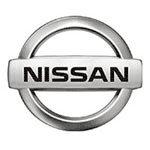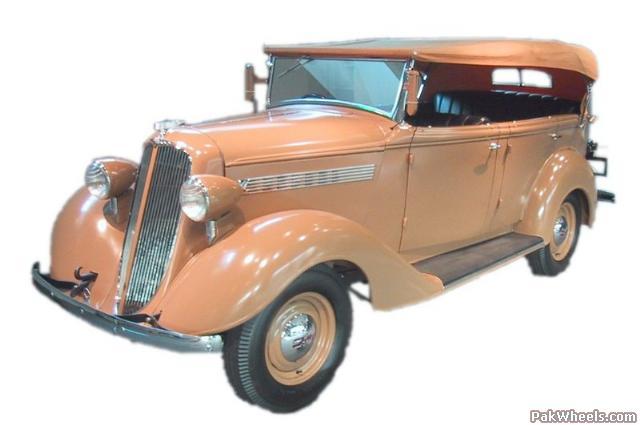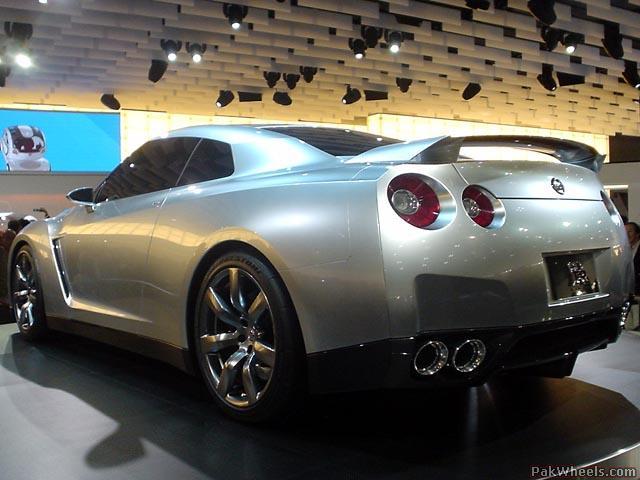
Nissan Motor Co., Ltd. (?????????, Nissan Jid?sha Kabushiki-gaisha?) (TYO: 7201 , NASDAQ: NSANY), which formerly marketed vehicles under the Datsun brand name, is a Japanese automobile manufacturer. The company's main offices are located in the Ginza area of Chuo-ku, Tokyo, Japan. Nissan plans to move their headquarters to Yokohama, Kanagawa by 2010; the headquarters will start construction in 2007.
Nissan is among the top three Asian rivals of the "big three" in the US.
The company marketed vehicles under the Nissan and Datsun brand names until 1983, when the Datsun brand name was dropped. Nissan is Japan's second largest car company after Toyota. After reports of poor Japanese management at Nissan during the 1990s, it agreed to the French manufacturer Renault buying a 44.4 percent stake in the company, while Nissan picked up a 15 percent stake in Renault.
Under foreign-born president Carlos Ghosn's "Nissan Revival Plan" (NRP), the company has rebounded in what many leading economists consider to be one of the most spectacular corporate turnarounds in history, catapulting Nissan to record profits and a dramatic revitalization of both its Nissan and Infiniti model line-ups. Despite the turnaround, Infiniti sales have been a disappointment. In 2001, the company initiated Nissan 180, capitalizing on the success of the NRP. Ghosn has been recognized in Japan for the company's turnaround in the midst of an ailing Japanese economy. Ghosn and the Nissan turnaround were featured in Japanese manga and popular culture. His achievements in revitalizing the Nissan were noted by Emperor Akihito, who awarded him the Japan Medal with Blue Ribbon in 2004.
VG and VQ V6 have been listed among "Ward's 10 Best Engines" for 12 straight years, since the award's inception.
Type: Public (NASDAQ: NSANY)
Founded: 1932
Headquarters: HQ in Nagasaka City, Japan
Key people: Carlos Ghosn, CEO, President, Co-Chair
Itaru Koeda, Co-Chair, Exec. VP
Takeshi Isayama, Vice Chair
Toshiyuki Shiga, COO
Nobuo Okubo, Exec. VP, Director
Industry: Auto & Truck Manufacturers
Products: Automobiles, Engines, Electronics and Communications, numerous others
Revenue: $75.63 billion USD (2004)
Employees: 159,771 (2005)
Website: www.nissanmotors.com
History
Nissan Model 70 Phaeton, 1938

In 1914, the Kwaishinsha Motorcar Works (???????, Kaishin Jid?sha K?j?), established three years earlier, in Azabu-Hiroo District in Tokyo, built the first DAT. The new car's name being the acronym of the company's partners' surnames:
* Kenjiro Den (? ??? Den Kenjir?)
* Rokuro Aoyama (?? ?? Aoyama Rokur?)
* Meitaro Takeuchi (?? ??? Takeuchi Meitar?).
The Works was renamed to Kwaishinsha Motorcar Co. in 1918, and again, in 1925, to DAT Motorcar Co.
Nissan Model 70 Phaeton, 1938
Enlarge
Nissan Model 70 Phaeton, 1938
The next year, the Tokyo-based company merged with the Osaka-based Jitsuyo Jidosha Co., Ltd. (???????????, Jitsuy? Jid?sha Seikoku Kabushiki Gaisha) (established 1919) as DAT Automobile Manufacturing Co. Ltd. (????????????, Dat Jidosha Seizo Kabushiki-Kaisha) in Osaka until 1932. In 1931, the first DATSON—meaning "Son of DAT"—was produced. However, the last syllable was changed to "sun", because "son" also means "loss" (?) in Japanese, hence the name "Datsun" (?????).
In 1933, the company name was Nipponized to Jidosha-Seizo Co. Ltd. (?????????, "Automobile Manufacturing Co. Ltd.") and moved to Yokohama. In 1934, Jidosha-Seizo merged with a fellow Japanese automanufacturer named Nihon Sangyo Co. Ltd. ("Japan Industry Co. Ltd.") who was popularly known as "Ni-San."
The company became Nissan Motor Co., Ltd. (?????, Nissan Jidosha Kaisha) on June 1, 1934, and was founded by Yoshisuke Aikawa. Nissan built trucks, airplanes, and engines for the Japanese military. Their main plant was moved to China after the land was captured by the military. The plant made machinery for the Japanese war effort until it was captured by American and Russian forces. For two years (1947 to 1948) the company was briefly called Nissan Heavy Industries Corp. (?????).
Like Hino and Isuzu, but unlike Toyota, Nissan partnered with a European company to gain access to automobile and engine designs. Nissan chose Austin of the United Kingdom, which later became the British Motor Corporation. Nissan began building Austin 7s in 1930, though the legitimacy of their license is debated. The company soon began producing a variety of Austin-derived models like the original Austin A50-based Datsun 1000. These designs were apparently covered by a 1952-1960 license agreement between the companies. After the Nissan introduced its own models in the 1950s, they continued to develop their own engine designs past what the Austin's A- and B-family designs offered. In 1967 introduced its new highly advanced four cylinder overhead cam (OHC) Nissan L engine, which while similar to Mercedes-Benz OHC designs was a totally new engine designed by Nissan. This engine powered the new Datsun 510, which gained Nissan respect in the worldwide sedan market. Then, in 1970 Nissan introduced the 240Z sports car which used a six-cylinder variation of the L series engine. The 240z was an immediate sensation and lifted Nissan to world class status in the automobile market.
In 1966, Nissan merged with the Prince Motor Company, bringing into its range more upmarket cars, including the Skyline and Gloria. The Prince name was eventually abandoned, with successive Skylines and Glorias bearing the Nissan name - however, "Prince" is still used in names of certain Nissan dealers in Japan. Nissan would introduce a new luxury brand for the US market in the late 1980s called Infiniti.
In the wake of the fuel crisis, Nissan became one of the world's largest exporters of automobiles and set up new factories in Mexico and Australia.
NISSAN GT-R Concept
Enlarge
NISSAN GT-R Concept
The firm established assembly operations in the United States in the early 1980s, with a plant in Smyrna, Tennessee. This facility at first built only trucks, but has since been expanded to produce several car lines. An engine plant in Decherd, Tennessee followed, and most recently a second assembly plant in Canton, Mississippi.
In order to overcome export tariffs and delivery costs to its European customers, Nissan contemplated establishing a plant inside Europe's borders. After an extensive review, Sunderland in United Kingdom was chosen due to the local availability of a highly skilled workforce and its position near major ports. The plant was completed in 1986 as the subsidiary Nissan Motor Manufacturing (UK) Ltd. Since then it has arisen to achieve the highly coveted title of being the most productive plant in Europe, and by 2007 will be producing 400,000 vehicles per year.
Financial difficulties (approaching billions) in Australia in the late 1980s caused Nissan to cease production there. Due to the "Button Plan" the Australian operation was unique as the Nissan products were also rebadged both by Holden (Pulsar re-badged as Holden Astra), and Ford (Bluebird re-badged as Ford Corsair).
Nissan also produces cars at its factory near Pretoria, South Africa.
In 2002, Toyota and Nissan agree to tie up on Hybrid Technologies and in 2004, Nissan unveils Altima Hybrid Prototype.
Nissan began development of FCVs (hydrogen vehicles) in 1996 and launched limited lease sales of the X-Trail FCV in Japan in fiscal year 2003.
On May 17, 2006 Nissan releases Atlas 20 hybrid truck in Japan.
On June 30, 2006, General Motors convened an emergency board meeting to discuss a proposal by shareholder Kirk Kerkorian to form an alliance between GM and Renault-Nissan. CEO Rick Wagoner is studying the proposal.
The company's head office is now in Tokyo but will move back to Yokohama in 2009. Nissan North America will relocate its headquarters from Gardena, California to Franklin, Tennessee in 2008. It is due to California's business regulations and high costs doing business in California.
NISSAN GT-R Concept

Products
Nissan has produced an extensive range of mainstream cars and trucks, initially for domestic consumption but exported around the world since the 1950s. There was a major strike in 1953.
It also produced several memorable sports cars, including the Datsun Fairlady 1500, 1600 and 2000 Roadsters, the Z-car, an affordable sports car originally introduced in 1969; and the Skyline GT-R, a powerful all-wheel-drive sports coupe.
In 1985, Nissan created a tuning division, NISMO, for competition and performance development of such cars.
Until 1982, Nissan automobiles in most export markets were sold under the Datsun brand. Since 1989, Nissan has sold its luxury models in North America under the Infiniti brand.
Nissan also sells a small range of keicars, mainly as a joint venture with other Japanese manufacturers like Suzuki or Mitsubishi. Nissan does not develop these cars. Nissan also has shared model development of Japan domestic cars with other manufacturers, particularly Mazda, Subaru, Suzuki and Isuzu.
In China, Nissan produces cars in association with the Dongfeng Motor Group including the 2006 Nissan Livina Geniss. This is the first in the range of a new worldwide family of medium sized cars and is to make its world debut at the Guangzhou International Motor Show.
List of Nissan vehicles
Datsun
* 1965–1985 Datsun Sunny
o 1965–1969 Datsun Sunny/1000/B10
o 1971–1973 Datsun Sunny/1200/B110
o 1974–1977 Datsun Sunny/120Y/B210
o 1978–1982 Datsun Sunny/120Y/140Y/B310
o 1982–1985 Datsun/Nissan Sunny/B11
* Datsun 100A
* Datsun 140J
* Datsun 180B/180B SSS
* Datsun 200B/200B SSS
* Datsun 200L
* Datsun 210
* Datsun 240C
* 1969–1973 Datsun 240Z
* Datsun 260C
* 1974–1975 Datsun 260Z
* 1976–1978 Datsun 280Z
* 1979–1983 Datsun 280ZX
* 1968–1973 Datsun 510 Sedan
* 1980–1986 Datsun 720 Pickup
* 1958 Datsun 1200 Sedan
* 1962–1970 Datsun 1500, 1600, 2000 Roadster
* 1962–2001 Datsun Bluebird
* Datsun Cherry
* Datsun Patrol (1962)
* Datsun SPL 210 (1960)
[edit]
Nissan
* Nissan 100NX
* Nissan 180SX (branded as 200SX in Europe)
* 1977–2002 Nissan 200SX (Silvia)
* 1995–1998 Nissan 200SX (US 2-door Sentra coupe)
* 1989–1998 Nissan 240SX (JPN S-13 and S-14)
* 1984–1989 Nissan 300ZX Z31 (Fairlady Z in Japan)
* 1990–1999 Nissan 300ZX Z32 (Fairlady Z in Japan)
* 2003–present Nissan 350Z Z33 (Fairlady Z in Japan)
* 1995–2006 Nissan Almera
* 1993–present Nissan Altima
* 2004–present Nissan Armada
* Nissan Auster
* 1990–2003 Nissan Avenir (Expert)
* Nissan Axxess
* Nissan Bluebird
* 1960–present Nissan Cedric/Gloria/President
* 1988–present Nissan Cefiro
* Nissan Cherry
* Nissan Cima
* 1998-present Nissan Crew
* 1998-present Nissan Cube
* 1986.5-1997(?) Nissan D21 Hardbody Pickup
* Nissan Elgrand
* Nissan Fairlady
* 1991 Nissan Figaro
* 1959–present Nissan Frontier
* Nissan Gazelle
* 1988–1998 Nissan Largo
* 1968–1989 Nissan Laurel
* Nissan Leopard
* 1981–present Nissan Maxima
* Nissan Multi
* 2003–present Nissan Murano
* 1982–present Nissan Micra (Nissan March in Japan and Taiwan)
* Nissan Moco, a Keicar
* Nissan Navara
* 1991—1994 Nissan NX1600/NX2000
* 1950— Nissan Patrol/Safari
* 1985–present Nissan Pathfinder
* 1986–1992 Nissan Pintara
* Nissan Platina
* 1981— Nissan Prairie
* 1990–1992 Nissan Presea R10
* 1994–1996 Nissan Presea R11
* 1990–present Nissan Primera
* 1978–present Nissan Pulsar
* 1968 Nissan R380
* 1969 Nissan R381
* 1970 Nissan R382
* 1989 Nissan R89
* 1997–1998 Nissan R390
* 1994-1999 Nissan Rasheen
* Nissan Quest
* 1991 Nissan Saurus Jr.
* 1982–present Nissan Sentra
* 1991–present Nissan Serena (originally Vanette Serena in Japan)
* 1988–2002 Nissan Silvia/180SX/200SX/240SX
* 1952–present Nissan Skyline
o Nissan Skyline GT-R
* 1977–1992 Nissan Stanza
o Nissan Stanza Wagon
* 1965–2002 Nissan Sunny
o 1985–1989 Nissan Sunny/B12
* 2003–present Nissan Teana
* Nissan Terrano
* Nissan Terrano II
* 2004–present Nissan Titan
* 2007— Nissan Versa
* Nissan Violet
* 1994–2005 Nissan Wingroad
* Nissan X-Trail
* 2000-present Nissan Xterra
List of Nissan engines
Straight-4
Nissan's Straight-4 engines include:
* 1952-1955 Nissan D engine — 0.9 L — D10
* 1955-1966 Prince G engine — 1.5/1.8/1.9/2.0 L — GA-4/G-1, GB-30/G-2, G-15, G-18, GA30, GB4
* 1957-1960 Nissan C engine — 1.0 L
* 1961-1970 Nissan G engine — 1.5/1.6 L — G, G16
* 1963-? Nissan SD engine - Series One — Diesel 2.2/2.5 L — SD22, SD25 (See Straight-6 below for other SD engines.)
* 1965-1969 Nissan J engine — 1.3/1.5 L — J13, J15
* 1967-1970 Nissan H engine — 1.9/2.0 L — H, H20 (See Straight-6 below for other H engines.)
* 1968-1980 Nissan L engine — 1.3/1.4/1.6/1.8/2.0 L — L13, L14, L16, L18, L20B (See Straight-6 below for other L engines)
* 1968-1982 Nissan A engine — 1.0/1.2/1.3/1.4/1.5 L — A10, A12, A12T, A12A, A13, A14, A15
* 1979-1989 Nissan Z engine — 2.0/2.2/2.4 L — Z20S, Z20E, Z22E, Z24
* 1981-1993 Nissan CA engine — 1.6/1.8/2.0 L — CA18I, CA18DE, CA18DET, CA20, CA16
* 1982-1988 Nissan E engine — 1.0/1.3/1.5/1.6 L — E10, E13, E15E, E15ET, E16
* 1982-1983 Nissan Z engine — 1.8 L — Z18ET
* 1983-1985,1991-1997? Nissan CD engine — Diesel 1.7/2.0 L — CD17, CD20, CD20T, CD20ET, CD20E
* 1983-1986? Nissan FJ engine — 2.0 L — FJ20E, FJ20ET
* 1983-1992 Nissan MA engine — 0.9/1.0/1.2 L — MA09ERT, MA10, MA10S,MA10E MA12S
* 1987-present?Nissan GA engine — 1.3/1.4/1.5/1.6 L — GA14DE, GA16E, GA16DE, GA16DS
* 1986-present Nissan KA engine — 2.4 L/2.0 L — KA20DE, KA24E, KA24DE
* 1987-present Nissan SR engine — 1.6/1.8/2.0 L — SR16DE, SR16DI, SR16D, SR16VE, SR16VE N1, SR18DE, SR18DI, SR18DIT, SR20DE, SR20DET, SR20DE GT Spec, SR20DI, SR20VE, SR20VET
* 1993-2002 Nissan CG engine — 1.0/1.3/1.4 L — CG10DE, CG13DE, CGA3DE
* 1999-present? Nissan YD engine — Diesel 2,2 L 2,5 L — YD22DT — YD25DT
* 1999-present Nissan ZD engine — Diesel 3.0 L — ZD30DT
* 1999-present Nissan QG engine — 1.3/1.5/1.8 L — QG18DE, QG18DD
* 2001-present Nissan QR engine — 2.0/2.5 L — QR25DE, QR20DE, QR20DD
* 2002-present Nissan CR engine — 1.0/1.2/1.4 L — CR10DE, CR12DE, CR14DE
* 2005-present Nissan HR engine — 1.5/1.6 L — HR15DE, HR16DE
* 2005-present Nissan MR engine — 1.8/2.0 L — MR18DE, MR20DE
Straight-6
Nissan's Straight-6 engines include:
* 1965-1967 Nissan H engine — 3.0 L — H30 (See Straight-4 above for other H engines.)
* ????-???? Nissan P engine — 4.0 L — P40
* 1968-1983 Nissan L engine — 2.0/2.4/2.6/2.8 L — L20A, L20ET, L24, L24E, L26, L26E, L28E, L28ET (See Straight-4 above for other L engines)
* 1969-197? Nissan S20 engine
* 1980-1988 Nissan SD engine - Series Two — Diesel 3.3 L — SD33, SD33T (See Straight-4 above for other SD engines.)
* 1985-2002 Nissan RB engine — 2.0/2.4/2.5/2.6/2.8/3.0 L — RB20DE, RB24DET, RB25DE, RB25DET, RB26DETT, RB28DETT, RB30E, RB30ET, RB20E, RB30DE
* 198?-19?? Nissan RD engine — Diesel 2.8 L — RD28, RD28T
V6
Nissan's V6 engines include:
* 1984-2004 Nissan VG engine — 3.0/3.3/2.0/2.5 L — VG30E, VG30ET, VG30DE, VG30DET, VG30DETT, VG33E, VG33E-R, VG20E, VG20DE, VG20DET, VG25DE, VG30DETT
* 1992-1994 Nissan VE engine — 3.0 L — VE30DE
* 1995-present Nissan VQ engine — 2.0/2.5/3.0/3.5/4.0 L — VQ30DE, VQ35DE, VQ40DE, VQ20DE, VQ25DE, VQ25DD, VQ30DD, VQ30DET, VQ35DD, VQ30DE-K
V8
Nissan's V8 engines include:
* 1965-1973 Nissan Y engine — 4.0 L — Y40
* 1990-2001 Nissan VH engine — 4.1/4.5 L
* 2002-present Nissan VK engine — 4.5/5.6 L
Wankel engine
Nissan showed a prototype Wankel rotary engine at the Tokyo Motor Show in 1972, but it never reached production. [1]
spancolor: #ff0000"" * Nissan PLASMA ("purazuma") engine (Powerful ? Econonomic, Lightweight, Accurate, Silent, Mighty, A)dvanced.
Pet name of new world engine series of Nissan Motor Co. To oppose the LASRE engine of Toyota Motor, it was put. It was an efficient engine series with the intention of new world engine with which all elements like a small size, lightness, high performance, low fuel cost, quietness and durability, etc. were do the higher dimensions and were harmonized by calling a newly developed engine generically in Nissan (at that time). PLASMA was a title that had been given to Nissan engines that made good use of an advanced technology and the latest electronics.
* Nissan ECC system (EGR)
* Nissan ECCS "eltukusu" (EGI) system (Electronic-Conetrated Engine Control System). It is an electronic engine centralized control system and the improvement of fuel cost and the improvement of making of the vehicle exhaust emission and clean driving have been achieved by always making the fuel jet, the amount of the exhaust gas reduction, the idol rotational speed, and the Falpomp control, etc. the best level control by one microcomputer according to all states of driving of the engine. The best control value in all states of driving is programmed in the control unit beforehand, and the control of the ECCS engine elects the optimal value with the sensor from among the data that the control unit memorizes according to the input signal from detection and the sensor, sends Acchatar the output and controls an each occasion state.
* Nissan Japanese website <a href='http://www.nissan.co.jp/'>http://www.nissan.co.jp/</a>
* Nissan Global website <a href='http://www.nissan-global.com/EN/index.html'>http://www.nissan-global.com/EN/index.html</a>
* Nissan USA website <a href='http://www.nissanusa.com/'>http://www.nissanusa.com/</a>